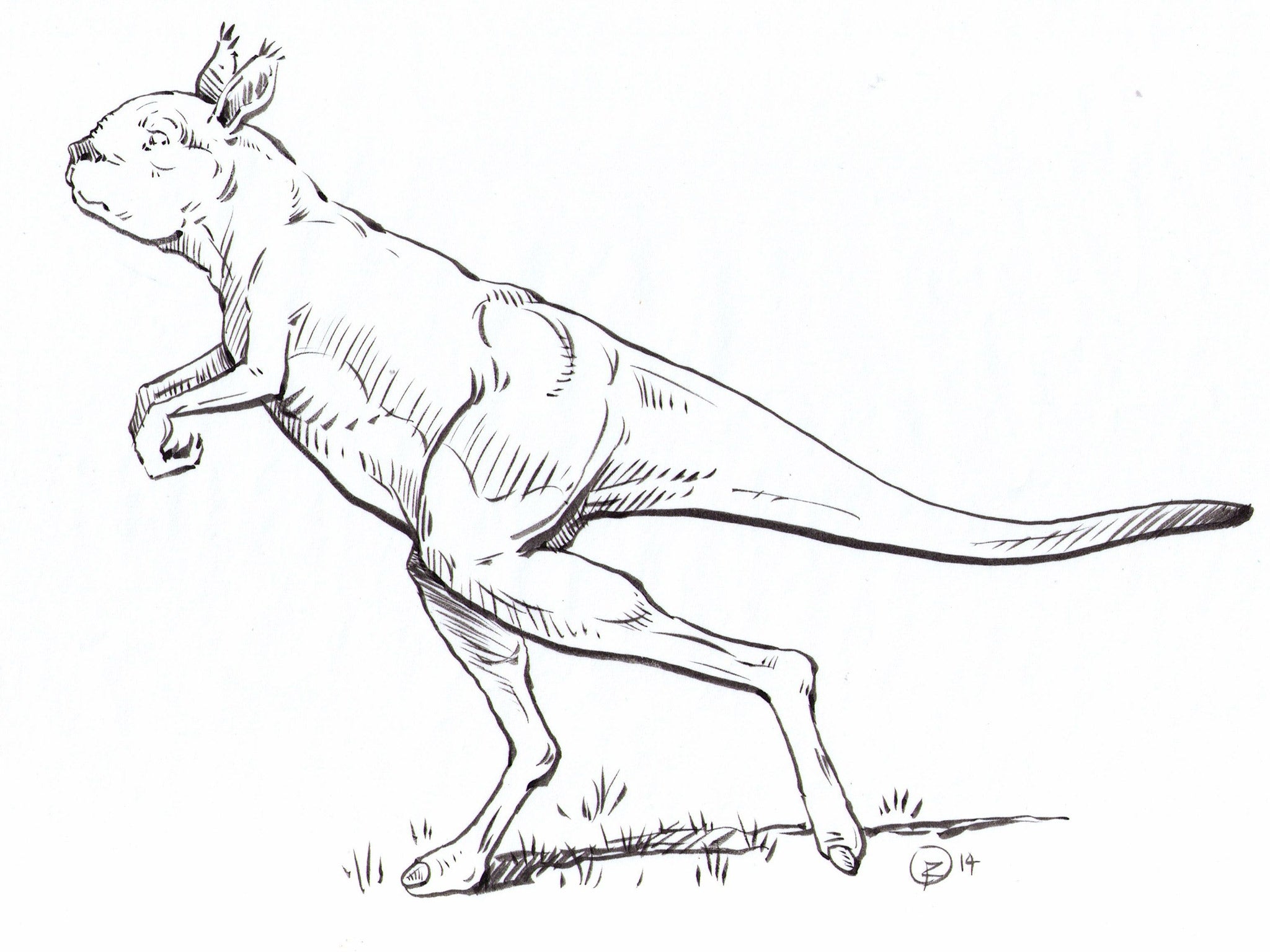The mystery of the extinct giant kangaroo is solved – it didn't hop, it walked
The giant Sthenurus – dead for 30,000 years – was three times the size of the modern-day kangaroo

Your support helps us to tell the story
From reproductive rights to climate change to Big Tech, The Independent is on the ground when the story is developing. Whether it's investigating the financials of Elon Musk's pro-Trump PAC or producing our latest documentary, 'The A Word', which shines a light on the American women fighting for reproductive rights, we know how important it is to parse out the facts from the messaging.
At such a critical moment in US history, we need reporters on the ground. Your donation allows us to keep sending journalists to speak to both sides of the story.
The Independent is trusted by Americans across the entire political spectrum. And unlike many other quality news outlets, we choose not to lock Americans out of our reporting and analysis with paywalls. We believe quality journalism should be available to everyone, paid for by those who can afford it.
Your support makes all the difference.It looked like something out of the pages of Alice in Wonderland but this giant, short-faced kangaroo hid another peculiar characteristic down its pouch – it walked rather than hopped on its hind legs.
The extinct marsupial, which was nearly three times bigger than the largest living kangaroos, died out 30,000 years ago, but only now have scientists been able to tie its locomotion down.
With a leap of the imagination, the researchers were able to visualise how the giant Sthenurus kangaroo, which weighed up to 240kg, moved around by putting one foot in front of another rather than hopping on both legs.
Bipedal hopping is a quintessential feature of kangaroo locomotion, but the Sthenurine group of extinct ‘roos was clearly made for walking, according to Christine Janis of Brown University in Providence, Rhode Island, who led the study published in the on-line journal PlosOne.
“When I first saw a mounted skeleton of a Sthenurine I was struck by how different it was in the back end to modern kangaroos, despite the superficial similarity of long hind legs,” Dr Janis said.
“My work emphasises that the large modern kangaroos are highly specialized in their anatomy for hopping in comparison with other large extinct kangaroos,” she said.
“Sthenurines almost certainly did hop, except perhaps for the very largest ones. The issue is that their anatomy is also suggestive of bipedal walking, which is the unexpected issue here,” she added.
Modern kangaroos use hopping to move around at speed but when moving slowly they walk mostly on all fours, using their massive tails as support – so-called “pentapedal” locomotion.
The extinct Sthenurus, however, must have walked on its hind legs because its anatomy does not fit with the notion of hopping or pentapedal locomotion, Dr Janis said. For a start, it had “robust”, heavier bones compared with the more slender anatomy of modern kangaroos, which would have made hopping hazardous.
“If it is not possible in terms of biomechanics to hop at very slow speeds, particularly if you are a big animal, and you cannot easily do pentapedal locomotion, then what do you have left? You’ve got to move somehow,” Dr Janis said.
An analysis of the giant kangaroo’s anatomy suggests it was well suited to bearing the animal’s entire weight on one leg, which is crucial for bipedal walking. Its ankle bone, for instance, had a flange over the back joint to provide extra support – something missing in modern kangaroos.
Sthenurus has proportionately bigger hip and knee joints than today’s kangaroos and the shape of its pelvis – broad and flared – suggested that it had large gluteal muscles in is backside, which would have allowed it to balance on one leg as it moved the other leg forward, Dr Janis said.
“I think that they originally took this up as an alternative slow gait to the way that other kangaroos move slowly on all fours using their tail to propel their hind legs past their front legs [because] hopping is biomechanically impossible at very slow speeds,” Dr Janis said.
“This requires a flexible back and supporting their weight on their hands, whereas sthenurines had a stiff back and specialized hands for feeding. So they had this unique walking gait,” she said.
Sthenurine kangaroos died out around the same time that modern humans arrived in Australia and began to spread across the continent, suggesting that their demise may have had something to do with human hunting.
Walking rather than hopping would have been a slower and less efficient means of moving fast, which may have been one of the reasons by the giant, walking kangaroo went extinct, leaving their hopping cousins to fill the void, Dr Janis explained.
Join our commenting forum
Join thought-provoking conversations, follow other Independent readers and see their replies
Comments